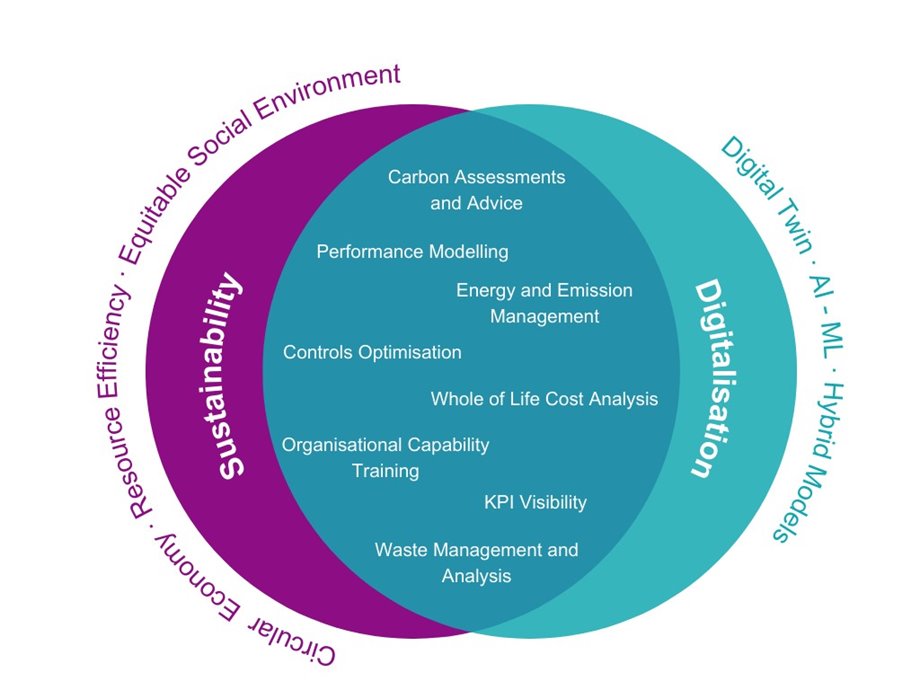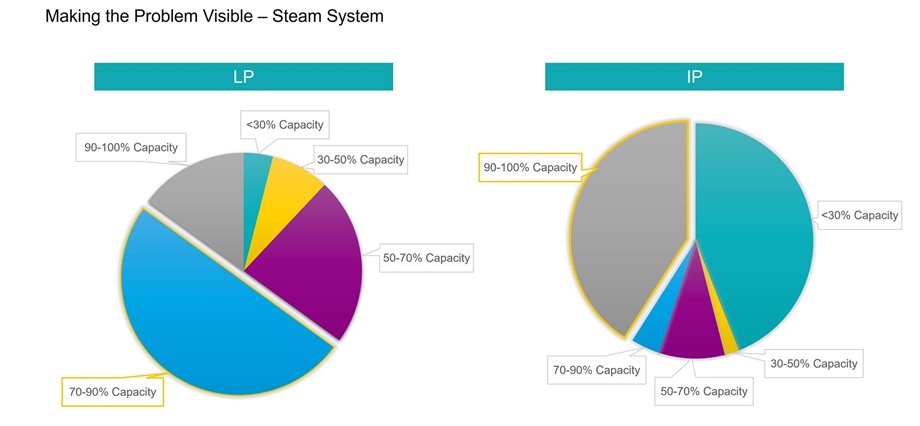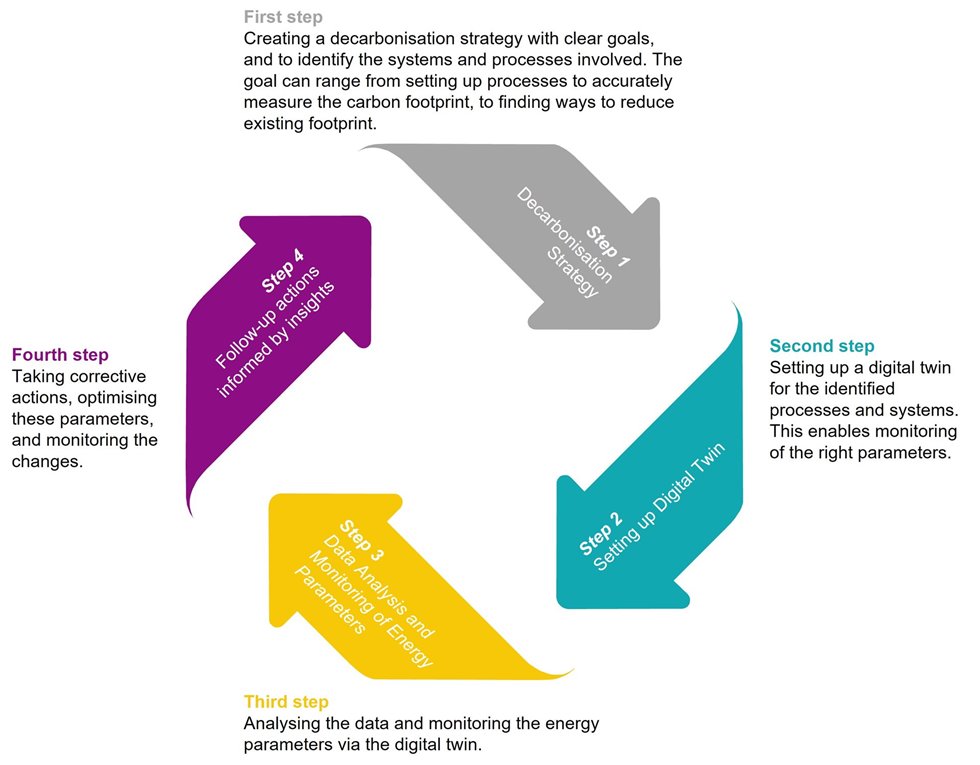In recent years, sustainability has become a core value for manufacturers around the globe, who are actively establishing targets to progressively reduce their operational carbon footprint — the total greenhouse gas emission generated directly and indirectly by these manufacturers.
Many manufacturers are looking into what is termed as the circular economy, an alternative to the traditional linear economy (take, make, waste). The circular economy is essentially a close-looped system that seeks to reduce waste, recover resources at the end of a product’s life, and channel them back into production, thereby significantly minimising environmental impact.
In this article, Aditi Kajale, Beca Senior Digital Consultant, explores the application of digital twin technology to help drive sustainability and a circular economy approach at speed and scale in manufacturing facilities.
Sustainable digitalisation in manufacturing and the role of digital twin
The ability to use digital technology to improve sustainability is known as Sustainable Digitalisation, where business practices are made sustainable with the help of digital tools and processes.
Timely, accurate and accessible data forms a large part of the answer to driving sustainable digitalisation and transformation, enabling actionable insights to be gained in support of solutions to a host of challenges. These actionable insights can help operators make better, informed decisions, facilitating enhanced sustainability outcomes in existing manufacturing units, while not losing sight of traditional business values.
One such technology is digital twin — a virtual replica or simulation of a physical object, process, system, or environment that uses real-world data and advanced analytics to mirror the behaviour and performance of its physical counterpart. At heart, digital twin is essentially a digital representation of a physical asset that allow for monitoring, analysis, and optimisation of performance throughout its entire life cycle.
According to the Global Enabling Sustainability Initiative (GeSI), digital twin can play a significant role in reducing global carbon dioxide emissions by up to 20% by enabling companies to manufacture products more efficiently, resulting in energy savings that reduce their carbon footprint. Other research has also found that companies who link digital and sustainable transformation are 2.5 times more likely to be among tomorrow’s strongest-performing businesses. For manufacturers, digital technology enables them to supercharge their efficiency, output, intelligence, and sustainability efforts.

How digital twin can support sustainability goals
Digital twins of physical processes or systems enable better visualisation and deeper insights into the data that is collected. Through digital twin, organisations can:
-
enable monitoring of systems and processes
-
facilitate predictive maintenance, where maintenance is performed based on the monitoring and analysis of the system
-
optimise equipment operation and minimise downtime
-
reduce the frequency of unplanned shutdowns and the need for emergency repairs, leading to less waste, lower energy consumption, and lower carbon emissions.
For manufacturers in particular, digital twin can be used to:
-
simulate and analyse the usage of resources like energy, water, and raw materials
-
identify inefficiencies and immediate corrective actions, helping to reduce waste, optimise resource usage, and ultimately lead to more sustainable outcomes
-
model circular economy processes, such as recycling and remanufacturing, through simulation and decarbonisation. This makes it possible to predict a transformation outcome more accurately.

Example of a data processing study that analysed energy consumption and operations against an optimised control scenario based on specialist knowledge, to identify areas of improvement.
Getting started with digital twin to drive sustainability
With four steps, you can kickstart your sustainability journey with digitalisation:

 By following these four steps, digital twin can provide better visibility and control of manufacturing facilities, allowing manufacturers to conduct rigorous data interrogation exercises and visualise the impacts of different scenarios.
By following these four steps, digital twin can provide better visibility and control of manufacturing facilities, allowing manufacturers to conduct rigorous data interrogation exercises and visualise the impacts of different scenarios.
Digital twin can also provide insights such as key drivers and factors that influence energy consumption and carbon emissions to help manufacturers make informed decisions to reduce them.
Future implications
Digital twins are currently used to great effect in industries including manufacturing, construction, healthcare, and infrastructure.
In time, we are likely to see ever-expanding use cases, such as in agriculture, where digital twins can be used as a primary method for farm management to manage their operations remotely and respond quickly to expected deviations. Or in the transport sector, where scenario analysis can be performed to optimise logistics and supply chain management, improve vehicle safety and performance. And in the realm of energy where digital twins are predicted to drive step change improvements in energy management and optimisation, energy-efficient design and upgrading of existing sites. The options, and opportunities, are limited in many ways only by the imagination.
Further, digital twin technology is expected to be more deeply integrated with artificial intelligence (AI) and machine learning to enhance their predictive capabilities. By incorporating AI, plant operators can extract valuable insights from plant data, which they can then use to drive improvement across various operations.
Early adoption of digital twin technology would allow companies to lead the benchmark in industry standards and allow for better upstream and downstream integration that directly addresses their production needs, building a competitive advantage.
 New Zealand
New Zealand
 Australia
Australia
 Singapore
Singapore